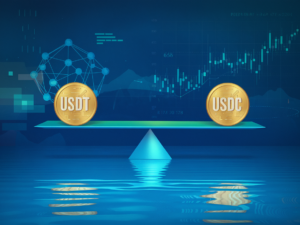5 Cryptocurrency Categories for Investment Opportunities
Crypto Coins
The world of cryptocurrency has been rapidly evolving, with a diverse range of digital assets emerging beyond the pioneering Bitcoin. Cryptocurrencies have become an increasingly popular investment option, offering both opportunities and risks for investors. It is crucial for investors to understand the different categories of crypto coins, their features, and their potential for investment.
Understanding the Different Categories
There are different coin categories depending on their reason for creation and the way they interact with the blockchain. These categories are divided into five (5)
- Bitcoin: The original and most known cryptocurrency. Its reason for creation is to digitize currency where there will be no third-party interference.
- Alternative coins (Altcoins): These are coins that emerged after bitcoin offering different uses like, smart contracts, faster processing time, and even more privacy.
- Shitcoins: They are coins with little or no value, often created for humorous purposes. They are digital currencies that are considered highly risky and unreliable, and their prices can be easily manipulated. Investing in shitcoins can be very risky and may result in significant financial losses.
- Meme coins: These coins are inspired by internet memes, or popular culture, or even by hobbies.
- Stable coins: Stable coins are coins that peg their value to traditional currencies to reduce volatility.
Which One to Invest In
The choice of which crypto coin to invest in will depend on the investor’s goals, risk tolerance, and investment horizon. Bitcoin, being the oldest and most established cryptocurrency, may be a safer option for more conservative investors. Altcoins, on the other hand, offer more potential for growth but also higher risk. Meme coins and shitcoins, while potentially offering high returns, are also extremely volatile and should be approached with caution, as they carry a high risk of financial loss. (Hu et al., 2019) (Aslanidis et al., 2020)
In summary, investors should carefully research and understand the different categories of cryptocurrencies, their features, and the associated risks before making any investment decisions.
Cryptocurrency and Its Importance for Investors
Cryptocurrencies, such as Bitcoin, have gained significant attention in recent years due to their potential as alternative investment options and their disruptive impact on traditional financial systems (Inci & Lagasse, 2019) (Wang & Klabjan, 2023).
1. Bitcoin: The Gold Standard of Cryptocurrency
Bitcoin, the first and most well-known cryptocurrency, has a unique history and set of features that have made it the “gold standard” of the crypto world. (Inci & Lagasse, 2019) It was created in 2009 by an unknown person or group using the name Satoshi Nakamoto, and it is a decentralized digital currency that operates on a peer-to-peer network without a central authority (Inci & Lagasse, 2019). Bitcoin is often referred to as “digital gold” due to its limited supply and its potential as a store of value.

Features and Benefits of Bitcoin
Bitcoin offers several features and benefits that have made it a popular investment option. These include its decentralization, transparency, security, and potential for appreciation in value. The limited supply of Bitcoin, which is capped at 21 million coins, is a key factor that has contributed to its value and popularity as a digital asset.
2. Altcoins: Beyond Bitcoin
Altcoins, which stands for “alternative coins,” refer to any cryptocurrencies that aren’t Bitcoin. You can think of Bitcoin as the original digital cash, and altcoins as all the other digital money that followed.
Altcoins are digital currencies that operate like Bitcoin but often have different features or aims. Some altcoins try to be quicker or consume less power than Bitcoin. Others might put emphasis on privacy or have unique uses beyond just serving as digital money.
Altcoins were created for several reasons:
- To improve on Bitcoin’s technology
- To serve different purposes beyond being digital money
- To give people more choices in the world of digital currencies
- To try out new ideas in the field of cryptocurrencies
Exploring the Different Types of Altcoins
Altcoins can be classified into several categories based on their unique features and use cases. Some popular types of altcoins are: 1) Ethereum (ETH) which focuses on smart contracts and decentralized applications, 2) Litecoin which aims to be faster and cheaper than Bitcoin, 3) Monero which prioritizes privacy, and 4) Ripple which is designed for fast and low-cost international money transfers.
Altcoins offer both opportunities and risks for investors
Risks:
- High Volatility: Altcoin prices can shift and you could lose significant money if the price plummets.
- Less Established: Many altcoins are newer and lack the track record of Bitcoin. They might not last long-term leaving investors with coins that have no value.
- Security Concerns: Smaller altcoins might have weaker protection making them more likely to experience hacks or technical issues.
- Regulatory Uncertainty: Laws about cryptocurrencies can change. Some altcoins might become banned or face strict limits affecting their worth.
Benefits:
- High Potential Returns: Some altcoins have seen huge price jumps. If you buy the right one at the right time, you could earn big profits.
- Diversification: Buying different altcoins can spread your risk across many projects and technologies in the crypto world.
- Innovative Technology: Many altcoins bring new features or fix problems that Bitcoin doesn’t tackle. Investing in these could help push technology forward.
- Lower Entry Costs: Many altcoins cost much less per coin than Bitcoin letting investors buy whole coins with less money.
3. Shitcoins: The Risky Investments
“Shitcoin” is a crude term that crypto folks use. It points to coins or tokens that seem to lack value or a clear purpose. Many see these as super risky or worthless when it comes to investing.
Why are they called Shitcoins?
The name “shitcoin” is meant to be harsh. People use it to caution others about coins that might:
- Be scams
- Have poor design
- Just copy other coins without making them better
- Exist as jokes
Evaluating the Risks and Benefits of Shitcoins
Shitcoins are risky because these coins are often used for purely speculative purposes and have little or almost no value beyond what the market is willing to pay for them. However, some shitcoins have gained value due to celebrity endorsements or viral social media trends, and the benefit of investing in them is the potential for high returns if the price increases rapidly. They are relatively cheaper to purchase compared to other cryptocurrencies.
Some risks of shitcoins are high volatility, potential lack of utility, susceptibility to manipulation, lack of regulation, and higher chances of scams.
On the other hand, the potential benefits of shitcoins can be the possibility of big gains if the price increases, diversification in a portfolio, low entry barriers, easy to follow trends, and cheap purchase cost.
4. Meme Coins: The Phenomenon
Meme coins are the type of cryptocurrencies that are inspired by internet memes, cultures, or even hobbies. Unlike bitcoins or other altcoins, meme coins are typically created as entertainment-focused assets.
Discussing the Popularity and Growth of Meme Coins
Meme coins like Dogecoin and Shiba Inu have seen exponential growth in popularity and valuation in recent years. Meme coins started as a joke around the year 2013 but have since then evolved with significant market impact. The first set of meme coins to launch are namely Dogecoin and Shiba Inu other coins like Floki Inu, Baby Doge Coin have since then joined the meme coin frenzy. Right now the most trending meme coins are dogs, pepe, notcoin, and even Hamster Kombat.
Risks:
1. High Volatility: Meme coin prices can fluctuate rapidly, leading to significant losses if not managed properly.
2. Lack of Fundamental Value: Meme coins often lack inherent value, making them susceptible to price drops when hype fades.
3. Community Pump and Dump: Meme coins can be subject to coordinated price manipulation by online communities, resulting in rapid price increases followed by sharp declines.
4. Limited Liquidity: Meme coins may have low trading volumes, making it difficult to buy or sell coins quickly enough or at a fair price.
Benefits:
1. High Potential for Growth: Meme coins can experience rapid price increases if they gain popularity or traction online.
2. Low Entry Costs: Meme coins often have low prices, making it accessible to investors with limited capital.
3. Community Engagement: Meme coins can foster strong online communities, driving engagement and potentially leading to new opportunities.
4. Entertainment Value: Trading meme coins can be entertaining and enjoyable, especially for those who enjoy the humor and creativity surrounding these coins.
5. Stable Coins:
Stable coins are a category of cryptocurrencies that are designed to maintain a stable value, often pegged to a real-world asset like the US dollar. These coins aim to provide the benefits of cryptocurrencies, such as fast transactions and secure storage, while minimizing volatility.
Types of Stable Coins and their uses:
- Fiat-Backed Stable Coins: These coins are backed by traditional fiat currencies like the US dollar, Euro, or Japanese Yen. They are often used for trading, lending, and payments. Examples are USDT, USDC, etc.
- Commodity-Backed Stable Coins: These are backed by physical assets like gold, silver, or other commodities. They can be used as a store of value. Examples are PAX Gold and Tether Gold.
Recommendations for Crypto Coin Investments
When it comes to investing in cryptocurrencies, it’s important for investors to carefully consider their investment goals, risk tolerance, and time horizon. For more risk-averse investors, Bitcoin may be the safest option as the established “gold standard” of cryptocurrencies. Altcoins offers more potential growth and chance for higher returns, with a lot of trading opportunities to choose from. However, meme coins and shitcoins should be approached with caution because they are highly volatile and very uncertain. But if properly calculated the profits can surpass that of altcoins in a single trade.









I conceive this web site has got some very superb info for everyone : D.
As I website possessor I conceive the content here is really superb, thankyou for your efforts.
Your feedback is very much appreciated. Thank you for your support
Really clear website , regards for this post.
Greetings! I know this is kinda off topic however , I’d figured I’d ask. Would you be interested in exchanging links or maybe guest writing a blog post or vice-versa? My website covers a lot of the same topics as yours and I feel we could greatly benefit from each other. If you’re interested feel free to shoot me an email. I look forward to hearing from you! Awesome blog by the way!
Thank you. I am very much open to collaboration, and exchanging of links is a perfect start
I think this site holds some very excellent information for everyone : D.
Hi there! This is my first visit to your blog! We are a team of volunteers and starting a new project in a community in the same niche. Your blog provided us useful information to work on. You have done a extraordinary job!
Thank you very much for your kindness. We are open to collaboration.
In the awesome design of things you receive an A+ for hard work. Where you actually misplaced everybody was in all the facts. As as the maxim goes, the devil is in the details… And it could not be more accurate here. Having said that, let me reveal to you what did do the job. Your text is highly persuasive and that is most likely why I am making an effort in order to opine. I do not really make it a regular habit of doing that. Secondly, despite the fact that I can certainly see the leaps in reasoning you make, I am not certain of how you appear to connect the details that make the actual conclusion. For now I shall yield to your point but hope in the future you connect your facts better.